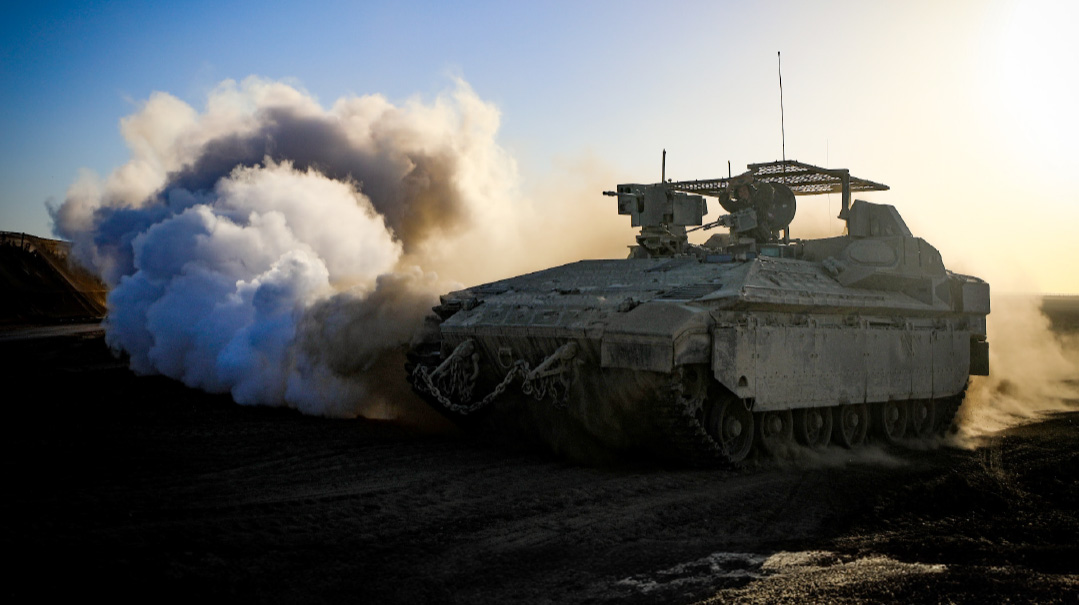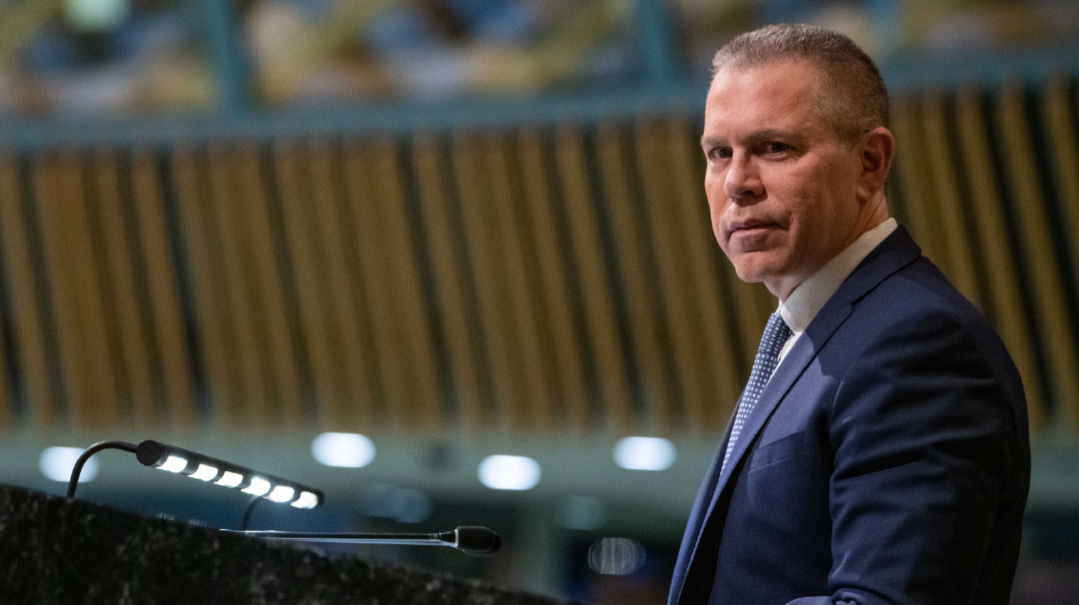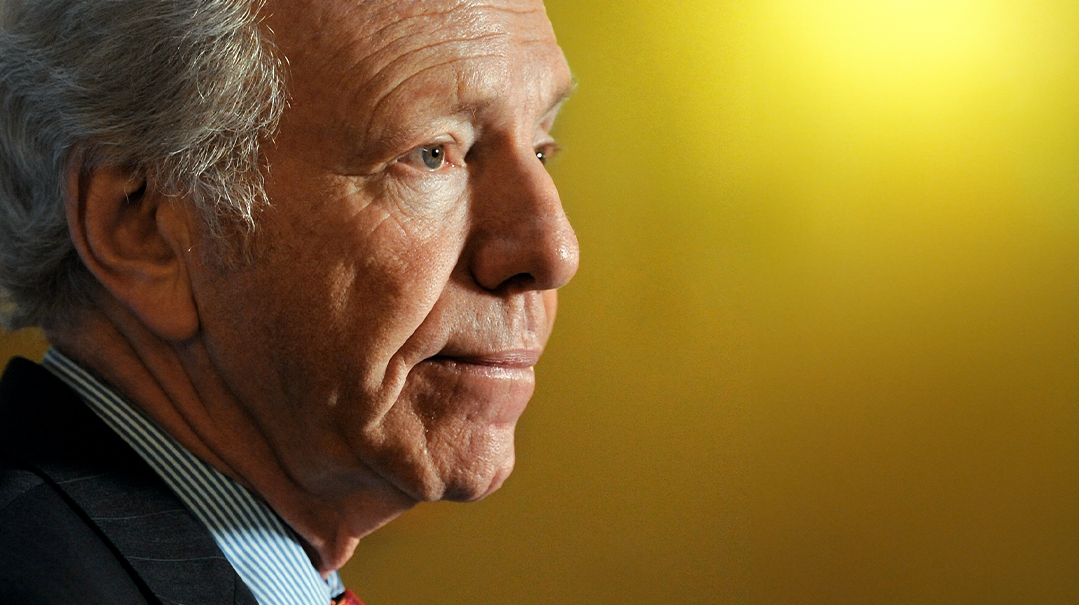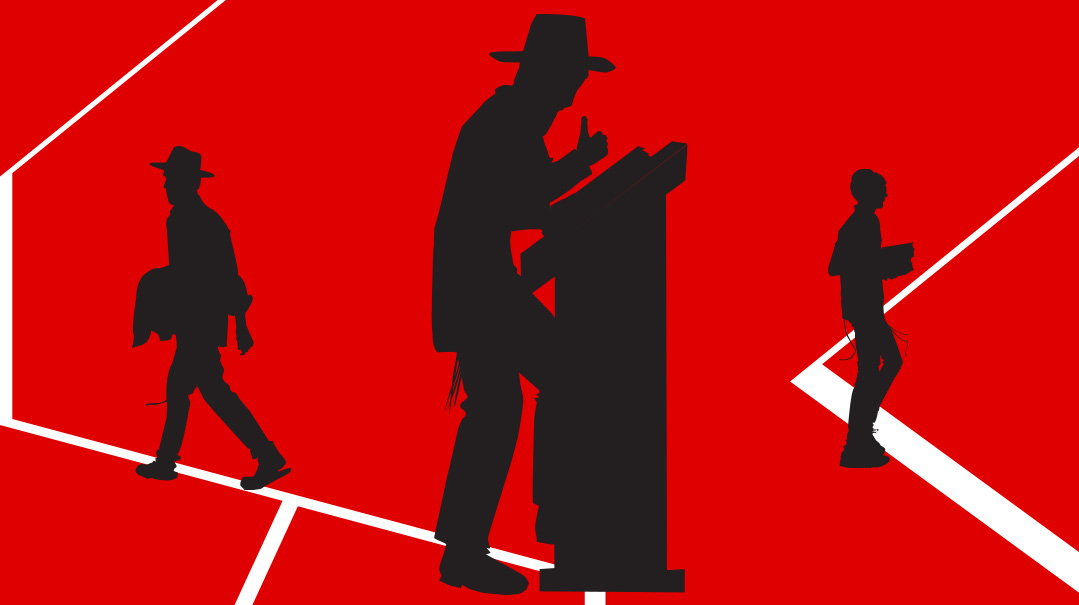Terror Breakout
| October 5, 2021How a 1980s Gaza escape raises warning signs today
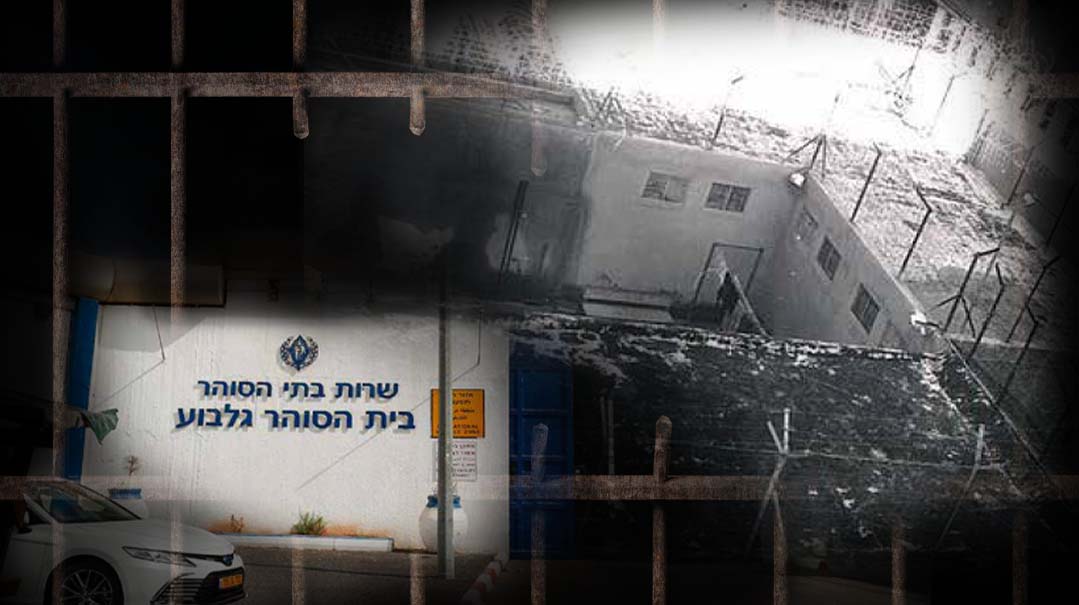
Photos: AP Images
When six Palestinian terrorists escaped their supposedly maximum security cells in Israel’s Gilboa Prison on Erev Rosh Hashanah, triggering a massive manhunt, there was jubilation on the Palestinian street and embarrassment for Naftali Bennett’s government.
But for former Israeli military personnel who served in Gaza in the ’80s, including myself, the prison break had eerie parallels to an even more sensational escape that occurred over 30 years ago, on May 18, 1987. With just a few changes to names and places, it’s hard to tell one incident from the other.
Then, as now, six prisoners escaped under cover of a dark night. In both breakouts, the group belonged to the Islamic Jihad terror organization. Most unbelievable of all, the police minister back then was former chief of staff Chaim Bar Lev, father of current public security minister Omar Bar Lev, himself a former high-ranking IDF officer.
Strange parallels aside, the long-forgotten incident raises warning flags about the current unrest on the Palestinian street. As in the Gilboa breakout, the incident was heralded by signs of unrest after a long period of relative calm. Then it was mostly stabbing attacks against Israeli civilians who entered the Gaza Strip for shopping; today it’s rockets and incendiary balloons from Gaza, as well as a growing number of shooting attacks targeting Israeli security forces in Judea and Samaria, especially around Jenin.
The 1987 incident severely rattled the country, and in a sense its reverberations continue to be felt today. Because that jailbreak has entered Gazan lore as the trigger for the First Intifada and the decades of bloodletting since.
Back to Gaza
To compare the two events, I turned to the man who was my first superior officer, Colonel David Chacham, former IDF advisor on Arab affairs in Gaza. He was serving in Gaza at the time of the breakout, which took place on Lag B’omer — I myself only arrived there a year later, in November 1988.
“In the Gaza incident,” he says “the breakout was aided by the other inmates. They pretended to be holding a raucous party for the meal breaking the Ramadan fast.”
Chacham points out another parallel between the two escape bids. “The breakout at the Gaza prison was only discovered by the guards during the next morning’s roll call, mirroring the break at the Gilboa prison, in which the guards slept through the entire episode.”
The plan for the Gaza prison breakout was less sophisticated than the one at Gilboa, which involved the prisoners dissolving a layer of concrete with an acidic substance, possibly cola. “The six conspirators sawed off two bars from the window grating in the bathroom of their cell. They did this with the aid of two steel hacksaws that had been smuggled in for them.
“Once the window was open, they slid down into the prison courtyard with a makeshift rope fashioned out of bedclothes. In the darkened courtyard, they climbed up into a high tree, from which they jumped over the wall to a group of co-conspirators awaiting them below, who had arranged a hideout for them.”
The prison from which the successful escape took place was part of the IDF military headquarters in Gaza. The compound was built decades beforehand, prior to the founding of the state — in the ’30s, by the Solel Boneh company. It was one of many so-called “Tegart forts” built by the British across Mandatory Palestine, used by their police.
These forts were named after Sir Charles Tegart, former commissioner of the Calcutta police and an imperial expert on policing and counterterrorism. In the late ’30s he was sent to Israel to advise the British authorities on putting down the Arab rebellion and ensuring that it was not repeated. Sixty-nine such forts were constructed across the country during the second stage of the Arab revolt and the early years of World War II.
Our complex included the headquarters of the civil administration, in which I served alongside David Chacham (although our office was on the other side of the main street of Gaza city, Omar Mukhtar Street, in the government complex called Abu Khadra). That complex also housed the headquarters of the Gaza division, which in those days, before the outbreak of the intifada, consisted of only a single brigade. The site also housed a variety of other administrative and aid facilities. Besides all this, there was also the prison, which was considered to be one of the most secure in Israel, where a large number of the inmates were serving very long sentences.
I remember the building mostly for the Shabbosos, because I and a few other religious soldiers would often join the prison guards for davening in a shul they had built inside the prison, in memory of a friend of theirs who had been killed by an accidentally discharged bullet. That’s how I got to know the building up close.
Killers on the Loose
Guards fast asleep, ladders made from sheets — the 1987 breakout was almost a parody of a jailbreak, but the aftermath was deadly serious.
The attempt was spearheaded by Misbah al-Suri, an inmate at the prison who was originally from the Al-Maghazi refugee camp in the central Gaza Strip. Al-Suri had some prior experience in the planning of jail breaks. The first was in 1976, while he was incarcerated in Bet Sheva prison. His previous most recent attempt was in March 1985, in Gaza Prison itself. In the wake of the last attempt, he was placed in solitary confinement for two months
Al-Suri had been imprisoned in 1970 after lobbing a hand grenade at a military patrol in the Jabalia refugee camp. It was during his lengthy prison sentence that al-Suri became drawn to radical Islamic ideology, though he didn’t formally become a member of Islamic Jihad until after his release.
However, incarceration in Israeli prisons had become a habit for al-Suri that he found hard to shake. On May 19, 1986, a year to the day after his release, al-Suri again took part in an attack on an Israeli patrol, and was again taken into custody.
A week after the escape, one of al-Suri’s fellow terrorists, Saleh Ishtiwi, was caught and returned to prison. His capture gave impetus to the intelligence effort, but it was not enough. The following day, Misbah al-Suri murdered Galil Grossi, an Israeli citizen who came to Gaza for shopping, as many residents of southern Israel used to do at the time.
Al-Suri and his fellow escapees remained active and two of them, Imad Al-Saftawi and Khaled Saleh, managed to cross the border into Egypt, and from there made their way to Algeria.
When news broke that the terrorists were on the loose, it caused a furor in Israel. But unlike today, when no heads have rolled over the security lapse at Gilboa Prison, back then people took responsibility.
Police minister Bar Lev ordered a commission of inquiry, which decided after lengthy deliberations to dismiss Marcel Laval, the prison commander.
Then Israeli prison service commissioner, Major General David Maimon, a former military governor of Gaza who had led the effort to eliminate terrorism in the strip in the early ’70s, admitted to a keen sense of failure as a result of the escape of the prisoners, whose capture and internment he had participated in. Shortly afterward, he announced his resignation, although the official pretext was the severe overcrowding in the prisons.
But resignations wouldn’t bring back the other three fugitives, who remained at large, only emerging now and then to commit murders.
Gaza Gun Battle
After three months on the run, on August 2, 1987, another one of the six Islamic Jihad terrorists, Sami Al-Khalil, fatally shot Captain Ron Tal Hy”d, commander of the military police in Gaza. The blow was delivered when Tal’s car was stuck in traffic on Al-Wehda Street — one of the three arteries that cross Gaza City from east to west. This incident intensified the search for the fugitives.
A month later, on October 6, the Shin Bet finally determined the fugitives’ whereabouts. It was decided to set an ambush for the trio along the eastern traffic artery that crosses Gaza from south to north — between the Nachal Oz roadblock and the Shuja’iyya neighborhood.
The three weren’t alone. At least two other Islamic Jihad operatives, Khaled Krika and Ahmed Khalas, were in the car with them. When the fugitives realized they had driven into an ambush, they started firing, killing Shin Bet agent Victor Arjuan Hy”d. Within seconds, the site was the scene of an intense firefight that lasted some time and could be heard throughout the nearby neighborhoods of Shuja’iyya and Zitoun. It was the hottest news item of the day in the Gaza Strip. By the time it ended, two escapees, Sami Sheikh Khalil, Muhammad Al-Jamal, and the two operatives Khalas and Krika were dead.
Misbah Al-Suri himself managed to get away, though not for long. Five days later he was shot dead slightly south of the scene of the firefight, near the Berij refugee camp.
“On that day,” recalls David Chacham, “I was the commander on duty at the base. The dead were brought into the court of the government building. It was a shocking sight, and to me it was a clear sign that something was afoot, even if I couldn’t make sense of the events outside the walls of the military base I was stationed in.”
Intifada Inferno
Chacham’s assessment was correct, because the events triggered by the jailbreak spiraled out of control. To many Gaza residents, including the Islamic Jihad group, the October 6 incident at Shuja’iyya — the first battle of Shuja’iyya, as they call it — marked the start of what three months later would become known as the First Intifada.
At least, so claimed Islamic Jihad, in their proclamation that a general strike would be held on the sixth of every secular month until the end of the intifada, other groups imposing a strike on the ninth of every secular month.
The reality, of course, is more complicated. The escape from Gaza Prison and the killing of the fugitives certainly did act as catalysts for the outbreak of the intifada, but they weren’t the only factors. There was a range of other burning issues that were no less critical to the result.
One of the most important factors was the Jibril agreement. In May 1985, the Israeli government under Shimon Peres had agreed to a deal in which 1,150 Palestinian security prisoners would be released from Israeli prisons in exchange for three Israeli POWs from the first Lebanon War. They were Chezi Shai, who was captured by the PFLP terror group led by Ahmed Jibril during the battle of Sultan Yacoub in 1982; and Nissim Salem and Yosef Grof, who were captured as part of a group of eight Nachal soldiers and transferred to Jibril’s control.
The deal brought countless terror operatives back into the field, many of whom went on to become leaders of the intifada. The most prominent example was Sheikh Ahmad Yassin, who would later go on to found Hamas.
It’s too soon to say if last month’s Gilboa prison escape will have similarly dire ramifications. With all six escapees now back in the clink, the immediate damage from the incident appears more limited. On the Palestinian street, Islamic Jihad are enjoying greater prestige than Hamas, who were recently riding high after leading the summer war against Israel.
But there’s no doubt that the general feeling of security tension, in addition to talks about a new prisoner exchange deal between Israel and Hamas signals that the escape bid has whetted the terror groups’ appetite for tangling with Israeli forces.
At the very least, the Gaza prison break showed that handing Palestinian terror groups a propaganda coup can have repercussions down the line.
Will Israeli deterrence pay the price today?
(Originally featured in Mishpacha, Issue 880)
Oops! We could not locate your form.
